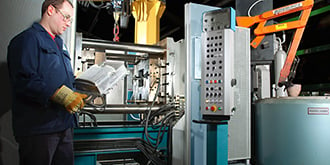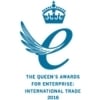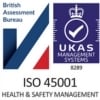This article was updated in July 2025 having originally been published in January 2024
The die casting process is an adaptable and efficient metal casting technique which is used to produce accurate and often intricate components. MRT Castings is an industry leader in the field and makes use of the latest tech to provide cutting-edge die-casting solutions for highly complex projects.
High pressure die casting: an in-depth look
Here, we’ll examine the various die casting methods and look at their pros and cons. High Pressure Die Casting is a common manufacturing technique which delivers excellent results for complex thin-walled parts at high volume. There’s high demand for this method especially in sectors that require absolute precision, high surface quality and production consistency.
PROCESS OVERVIEW
- Molten Metal Injection. Molten metal, typically aluminium or zinc, is injected under high pressure into a steel mould or die. This pressure is maintained until the metal solidifies. Depending on the size of the part, this can take as little as This takes a just few seconds.
- Die Construction. Dies are made of high-grade steel and are in two halves. They are designed to withstand the extremely high pressure of the process which can exceed 30,000 psi.
- Ejection and Cooling. After the metal sets, the moulds are opened and the casting is ejected. The die is then sprayed with a cooling lubricant before the next cycle begins.
Key Characteristics of High Pressure Die Casting
- Complex, Thin-walled Parts. High pressure die casting excels at manufacturing complex parts with thin walls down to 0.6 mm in some cases, which other casting techniques cannot achieve to an acceptable level.
- Excellent Dimensional Accuracy. The process gives outstanding dimensional precision and stability which is ideal for manufacturing parts that need strict tolerances.
- Superior Surface Finish. The die casting process produces components with excellent surface quality that need minimal finishing operations.
Technical Advantages
- High Speed and Efficiency. High pressure die casting operations can complete their cycles within a few seconds which enables faster component production.
- Automated Process. The high pressure die casting process contains automated stages that boost operational efficiency while lowering production costs.
- A Greener Way. High-pressure injection enables efficient material usage which reduces waste generation and reduces carbon footprint.
Applications
- Automotive Industry. High pressure die casting can produce engine blocks together with gearbox cases and other precision high-strength parts for automotive applications.
- Consumer Electronics. High pressure die casting produces miniature components for mobile devices, computers and other electronic products that need precise manufacturing.
- Aerospace and Defence. The manufacturing process produces lightweight durable parts essential for the sector. These include brackets and housings.
Challenges and Considerations
- High Initial Investment. The initial tooling expenses for high pressure die casting remain high which can make the process better suited for larger production runs.
- Porosity: The high pressure die casting process creates dense parts but porosity becomes a problem when working with thick sections. The production of parts with this method requires both proper design and strict process management.
MRT Castings provides high pressure die casting services which deliver efficient precise versatile solutions for making complex high-quality parts at large production volumes. The process stands out as a preferred choice for industries that need precise products and high production rates because it works with multiple light alloys at fast speeds.
In summary, high pressure die casting at MRT Castings offers a highly efficient, precise, and versatile method for producing high-quality, complex parts in large volumes. Its suitability for a wide range of metals, combined with its speed and efficiency, makes it a go-to choice for industries requiring precision and high throughout.
Gravity Die Casting: Detailed Overview
A process characterised by pouring molten metal into a permanent mould using gravity. This method is particularly effective for medium to high volume production of aluminium parts.
Process Details
- Mold Design and Construction. The moulds used in gravity die casting are typically made of steel or iron and can be reused several thousand times The design of moulds plays an essential role in achieving exact part dimensions and the desired surface quality.
- Pouring. The gravity die casting process requires molten metal to enter the mould using gravity only. This process requires a slower metal filling rate.
- Solidification and Ejection. The molten metal undergoes solidification after it fills the mould cavity before the mould is opened to extract the part.
Advantages
- Dimensional Accuracy. Gravity die casting makes it suitable for precise parts measurements though it does not reach the tight tolerances of high pressure die casting.
- Quality Surface Finish. The smooth finish quality of gravity die cast components eliminates the need for supplemental surface treatment procedures.
- Denser Castings. The method of slow pouring combined with solidification creates denser castings which reduces porosity problems.
Technical Benefits
- Versatility. The manufacturing process of gravity die casting enables the creation of components from small to larger dimensions which provides flexible part size and weight options.
- Economic Sound for Medium Volume Orders. The manufacturing process works as an economical solution for producing products at medium to high volume levels since it optimises mould cost with production output.
- Sustainability. The waste output from gravity die casting operations remains lower and therefore more eco-friendly than other casting manufacturing methods.
Applications
- Automotive Sector. The manufacturing process of gravity die casting produces engine components as well as gearbox cases and wheel hubs for automotive applications.
- Electrical Fittings. The manufacturing method is ideal for creating electrical parts that include enclosures and housings.
- Greener Engineering. Gravity die casting produces components that need both surface finish quality and dimensional precision standards. A good all-round process.
Challenges and Limitations
- Mold Cost and Maintenance. The initial investment for gravity die casting moulds is less than that of high pressure die casting moulds yet requires ongoing maintenance along with quality assurance procedures.
- Thin Walls. The gravity die casting method shows restricted capabilities when making extremely thin-walled or more complex parts.
- Porosity Management. Although gravity die casting produces fewer porosity problems than high pressure die casting the control of porosity remains crucial for all sections especially thicker parts.
The gravity die casting process at MRT Castings delivers efficient manufacturing capabilities for multiple industry applications. The process provides both good dimensional precision and surface quality along with economic advantages for producing medium to high volume quantities. This process delivers a balanced solution for many casting applications although it does not match the speed or accuracy of high pressure die casting.
Low Pressure Die Casting
The production of structural aluminium components sometimes uses low pressure die casting as a metal casting technique. The manufacturing facility at MRT Castings does not provide low pressure die casting services, but this process can represent a useful method for components. The low pressure die casting technique produces results which are less precise when producing more intricate or thin-walled components.
Process Overview
- Controlled Pressure Application. The mould receives its metal content through a pressure-driven injection system in low pressure die casting.
- Die Design. The dies for this process share similarities with gravity and high pressure die casting yet are constructed for the pressure to come from underneath.
- Cooling and Solidification. After the metal is injected into the die, it solidifies under pressure before being released.
Disadvantages
- Limited Material Options. Low pressure die casting has restricted material selection because it only works with aluminium and its alloys - unlike high pressure and gravity die casting, which offer more versatile material options.
- Slower Production. Low pressure die casting operates at longer production cycles than high pressure die casting which reduces its effectiveness for large-scale manufacturing.
- Less Dimensional Accuracy. The dimensional accuracy and stability of high pressure die casting exceed those achievable through this process.
Applications and Limitations
- Automotive and Aerospace. Low pressure die casting is used for components that do not require the intricate geometries or extreme precision that high pressure die casting provides.
- Cost. While the tooling costs might be lower than high pressure die casting, the overall production speed and efficiency are also lower, making it less economical for larger volume production.
Die CastING cOMPARISON
|
Die Casting Method
|
High Pressure Die Casting |
Gravity Die Casting |
Low Pressure Die Casting |
|
Volume Suitability |
High volume production |
Medium to high volume |
Medium volume production |
|
Surface Finish |
Excellent, with a smooth and detailed surface |
Good, with a smoother finish than low pressure die casting |
Good, but not as fine as high pressure or gravity die casting |
|
Dimensional Accuracy |
Very high, suitable for complex, thin-walled parts |
Good, suitable for parts requiring good dimensional stability |
Moderate, suitable for less complex designs |
|
Speed |
Very fast, efficient for large production runs |
Slower than high pressure, but still efficient |
Slow, best for small batches |
|
Complexity of Parts |
Suitable for complex, intricate designs |
Suitable for less complex parts than high pressure, but more than low pressure die casting |
Suitable for moderately complex designs, less so than high pressure and gravity die casting |
|
Materials Used |
Typically aluminium and zinc alloys |
Commonly aluminium and zinc alloys |
Mainly aluminium and its alloys |
|
Cost |
Higher initial tooling cost, but lower per-part cost in high volumes |
Lower tooling costs than high pressure, moderate per-part cost |
Lower initial tooling cost than high pressure, moderate per-part cost |
|
Ideal Applications |
Automotive, consumer electronics, and other industries needing large quantities of intricate parts |
Medium to large components in automotive, aerospace, and other industries |
Suitable for medium volume production without complex geometries |
Die Casting FAQs
What is the difference between high and low pressure die casting?
High pressure die casting forces molten metal into a die under extreme pressure, ideal for high-volume precision parts. Low pressure die casting uses gentle filling from below the mould, offering excellent metal quality and strength.
Which type of die casting is best for aluminium components?
Aluminium is commonly cast using high pressure or gravity die casting. The right choice depends on component size, complexity and required mechanical properties.
MRT Castings offers a range of die casting methods, each with its own set of advantages, catering to diverse industrial needs. With MRT's expertise, clients can expect high-quality castings tailored to their specific requirements.
Starting a New Casting Project?









